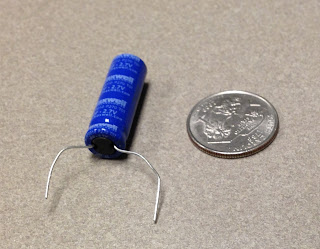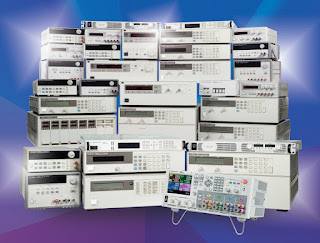In an earlier posting “Zero-burden ammeter improves
battery run-down and charge management testing of battery-powered devices”
(click here to access) I had talked about how the Agilent N6781A 2-quadrant SMU
can alternately be used as a zero-burden ammeter. When placed in the current
path as a zero-burden ammeter, due to its extended seamless measurement
ranging, it can measure currents from nanoamps, up to +/-3 amps, which is the maximum
limit of the N6781A. The N6782A 2-quadrant SMU can also be used as a zero
burden ammeter. It is basically the same as the N6781A but with a few less
features.
One customer liked everything about the N6782A’s
capabilities, but he had a battery-powered device that drew well over 3 amps
when it was active. When in standby operation its current drain ranged back and
forth between just microamps of sleep current to 6 or greater amps of current during
periodic wake ups. The N6782A’s +/- 3 amps of current was not sufficient to
meet their needs.
An alternate approach was taken that worked out well for
this customer, which was made possible only because of the N6782A’s zero-burden
ammeter capability. The set up is shown in Figure 1.
Figure 1: Setup for measuring micro-amps in combination
with large active-state currents
The N6752A 50V, 10A, 100W autoranging DC power module
provides all the power. The N6782A is set up as a zero-burden ammeter and is
connected in series with the N6752A’s output. When current ranges from
microamps up to +/- 3 amps the N6782A maintains its zero-burden ammeter
operation, holding its output voltage at zero. Once +/- 3 amps is exceeded, the
N6782A goes into current limit and the voltage increases across its output, at
which point one of the back-to-back clamp diodes turns on, conducting current
in excess of 3 amps through it. This all can be observed in the screen image of
the 14585A software in Figure 2. The blue trace is the N752A’s output current.
The middle yellow trace is the N6781A’s current and the top yellow trace is the
N6781A’s voltage.
Figure 2: Current and voltage signals for Figure 1 setup
captured with 14585A software
In Figure 2 measurement markers have been placed across a
portion of the sleep current and we find from the N6782A’s measurement readback
it is just 1.458 microamps average. The reason why this works is because of
zero burden operation. Because the N6782A is maintaining zero volts across its
output, there is no current flowing through either diode. If this same thing
was attempted using a conventional ammeter or current shunt, the voltage would
increase and current would flow through a diode, corrupting the measurement.
Now the customer was able to get the microamp sleep
current readings from the N6782A and at the same time get the high level wake
up current readings from the N6752A!
In a similar fashion another customer wanted to perform
battery run down testing. Everything was excellent about using the N6781A in its
zero-burden ammeter mode, along with using its independent DVM input for
simultaneously logging the battery’s run down voltage in conjunction with the
current. The only problem was they wanted to test a higher power device. At
device turn-on, it would draw in excess of 3 amps, which is the current limit
of the N6781A. Current limit would cause the N6781A to drop out of its
zero-burden ammeter operation and in turn the device would shut back down due
to low voltage. The solution was simple; add the back-to-back diodes across the
N6781A acting as a zero-burden ammeter, as shown in Figure 3. Any currents in excess of 3 amps would then
pass through a diode. Schottky diodes were used so the device would momentarily
see just a few tenths of a volt drop in the battery voltage, during the short
peak current in excess of 3 amps. Now the customer was able to perform battery
run-down testing using the N6781A along with the 14585A software to log all the
results!
Figure 3: Agilent N6781A battery run-down test set up,
with diode clamps for peak currents above 3A




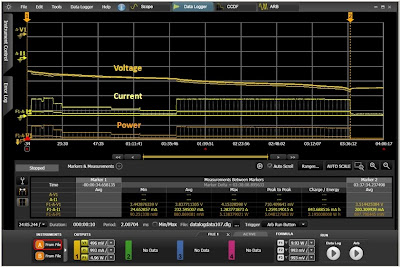



.jpg)

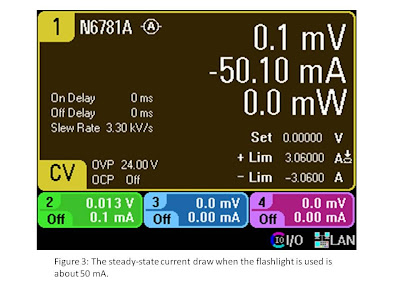.jpg)
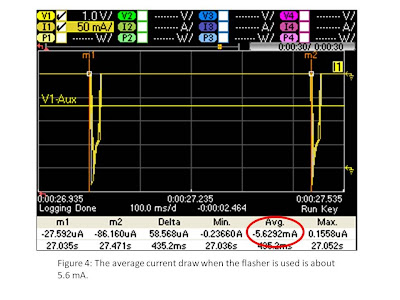.jpg)
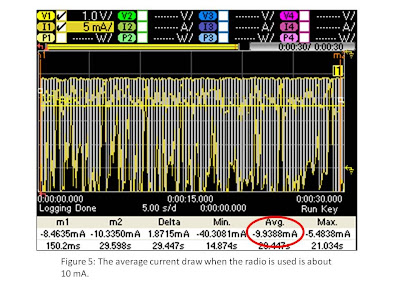.jpg)
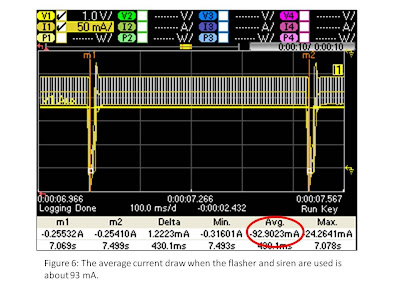.jpg)
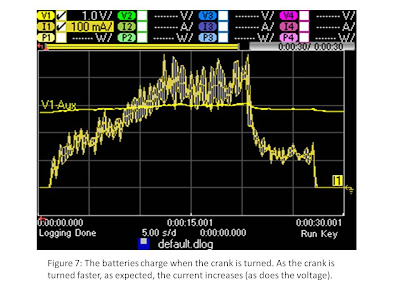.jpg)





.jpg)
.jpg)


